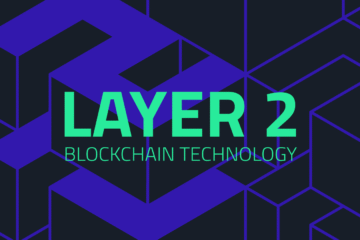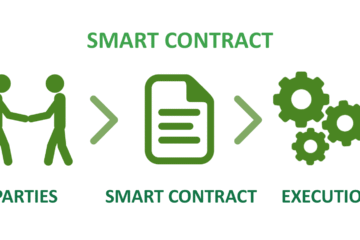Web3 Glossary for Beginners, Part 1

Web 3.0. New generation of the Internet abstract concept. Block chain decentralized technology. Digital communication, AI and virtual technology. Hexagonal grid sphere in wireframe hand. Vector
Web3 is booming, with individuals, businesses, institutions, and even governments jumping in to stake their claim in this new era of digital exploration.
As growth slows and competition intensifies in the Web2 internet, traditional tech giants like Alibaba, Tencent, Amazon, and Google are actively seeking Web3 opportunities.
You don’t need to go “all in” on Web3, but understanding its basics is a smart move. To help you dive into the Web3 world, we’ve compiled a guide to key Web3 terms and concepts.
Introduction
The Web3 space is packed with new jargon that can intimidate beginners, sometimes discouraging them from even starting. This article is here to demystify Web3 terminology and get you up to speed.
1. Cryptocurrency
Digital assets used as a medium of exchange on blockchain networks, with transactions verified and recorded by a decentralized system using cryptography.
2. Crypto Coins
Native assets of a blockchain, such as BTC for Bitcoin or ETH for Ethereum.
3. Stablecoin
A cryptocurrency designed to maintain a stable value, often pegged to a stable asset like the U.S. dollar, keeping its price at $1.
4. Shitcoin
A derogatory term for a cryptocurrency perceived as worthless, often referring to altcoins with little investor interest or value.
5. Crypto Tokens
Tokens built on top of existing blockchain applications, enabling the creation of various tokens on platforms like Ethereum. They can be used in apps or games and exchanged for a set amount of coins.
6. Airdrops
A marketing tactic where new projects distribute free tokens to community members for completing small tasks, like sharing a company’s post.
7. Fungible Token
A token with interchangeable properties, meaning it’s not unique. Fungible tokens can also be cryptocurrencies.
8. Block
A unit of data stored and encrypted on a blockchain.
9. Genesis Block
The first block recorded on a blockchain, like Bitcoin’s on January 3, 2009, which earned a 50 BTC reward.
10. Blockchain
An immutable digital ledger that tracks, records, and maintains transactions in a peer-to-peer network.
11. Bitcoin
A decentralized cryptocurrency that operates without a central bank, using a Proof-of-Work (PoW) consensus mechanism on blockchain technology.
12. Altcoins
Short for “alternative coins,” referring to all cryptocurrencies other than Bitcoin.
13. Creator Economy
A group of creators, curators, and community builders who monetize their content.
14. Ethereum
A decentralized, open-source blockchain that supports smart contract functionality.
15. Ether (ETH)
The native cryptocurrency of the Ethereum ecosystem, which can be bought, sold, or swapped on crypto exchanges.
16. Slashing
A penalty mechanism in blockchains like Ethereum, where validators lose assets for going offline or engaging in malicious activities.
17. Ethereum Request for Comment (ERC)
Technical documents used by smart contract developers to set token rules in the Ethereum ecosystem.
18. ERC-20
A technical standard for creating fungible tokens on the Ethereum blockchain, ensuring all such tokens share identical properties.
19. ERC-721
A free, open standard for building non-fungible tokens (NFTs) on the Ethereum blockchain.
20. ERC-1155
A multi-token standard combining ERC-20 and ERC-721 features, fixing their flaws and enhancing functionality.
21. Consensus Mechanism
A set of protocols, ideas, and incentives that enables a group of nodes to agree on a blockchain’s state.
22. Layer 1 (L1)
The base blockchain or on-chain network, capable of processing and finalizing transactions within its ecosystem. Examples include Bitcoin (BTC), Ethereum (ETH), and Solana (SOL).
23. Layer 2 (L2)
Off-chain networks built on existing blockchains to boost efficiency and scalability, handling some transaction load to optimize the base chain. Examples include Polygon on Ethereum and the Lightning Network on Bitcoin.
24. Proof of Stake (PoS)
A consensus mechanism where participants, called validators, stake cryptocurrency to have a chance to validate blocks and earn rewards.
25. Proof of Work (PoW)
A consensus mechanism requiring complex computational math problems to be solved using physical devices like computers to validate blocks.
26. Mining
The process of generating new tokens and validating transactions (e.g., Bitcoin) by using computers to solve computational problems that secure the blockchain and earn rewards.
27. Hashing
A cryptographic process that converts input data of any length into a fixed-size output, preventing fraud, double-spending, and securely storing passwords.
28. Hash Rate
The total computational power used for mining and processing transactions in Proof-of-Work systems like Bitcoin.
29. Node
A device running blockchain software to validate transactions and store them on the network.
30. Light Node
Also called a regular node, a light node is a computing device supporting the blockchain network, similar to miners in Proof-of-Work systems.
31. Full Node
A node that performs all light node tasks, holds a copy of the blockchain ledger, verifies and downloads all transaction data, and enhances network security.
32. Master Node
A node that only validates blocks without adding them to the blockchain, taking on roles like management, oversight, or governance depending on the protocol. Dash introduced the first master node in March 2014.
33. Crypto Wallet
An application on a computer or smartphone that stores public and private keys for cryptocurrency transactions, NFTs, and digital signatures.
34. Private Key
A string of letters and numbers that must be kept secure, acting as the password to unlock a crypto wallet.
35. Public Key
The address of a crypto wallet, used to receive cryptocurrency. It cannot be used to withdraw or access the account.
36. Burning Crypto
Permanently removing a large number of tokens from circulation by transferring them to an inaccessible wallet address, rendering them irretrievable.
37. Hot Wallet
A digital storage form accessible via computer or phone, typically free but vulnerable to hacks.
38. Cold Wallet
A physical device (e.g., USB drive) for offline crypto storage, offering greater security.
39. Seed Phrase
A random set of words generated by a crypto wallet upon signup, serving as the master key. It must be recorded offline to protect against hacks.
40. Wallet Address
A random string linked to a crypto wallet, enabling the owner to receive cryptocurrency transactions.
41. Decentralization
The transfer of power, like decision-making or control, from centralized entities (individuals, organizations, or governments) to a distributed network.
42. Decentralized Applications (DApps)
Applications that run autonomously on blockchain technology using smart contracts.
43. Decentralized Autonomous Organization (DAO)
A group controlled by its members, free from central government authority.
44. Decentralized Finance (DeFi)
Peer-to-peer financial services on public blockchains using smart contracts, bypassing intermediaries like exchanges or banks.
45. Total Value Locked (TVL)
A measure of the total assets locked in DeFi protocols, including tokens used in lending, staking, and liquidity pools.
46. Distributed Ledger
Digital data shared and synchronized across multiple locations, countries, or institutions without a central authority.
47. Distributed Ledger Technology (DLT)
A digital system for validating transactions with the help of nodes, recorded in multiple locations without central authority support.
48. Metaverse
A Web3 component, the metaverse is an evolving 3D virtual reality where users interact as avatars with people and objects in a virtual world.
49. Digital Twin
A 3D virtual representation of a real-world object or system.
50. Avatar
A user’s virtual identity in games, virtual reality, or the metaverse.
51. MetaMask
A crypto wallet available as a mobile app or Chrome extension, interacting with the Ethereum blockchain through secure logins, token storage, key management, and token swaps.
52. Machine Learning
A set of algorithms that improve themselves through data and experience without human intervention.









